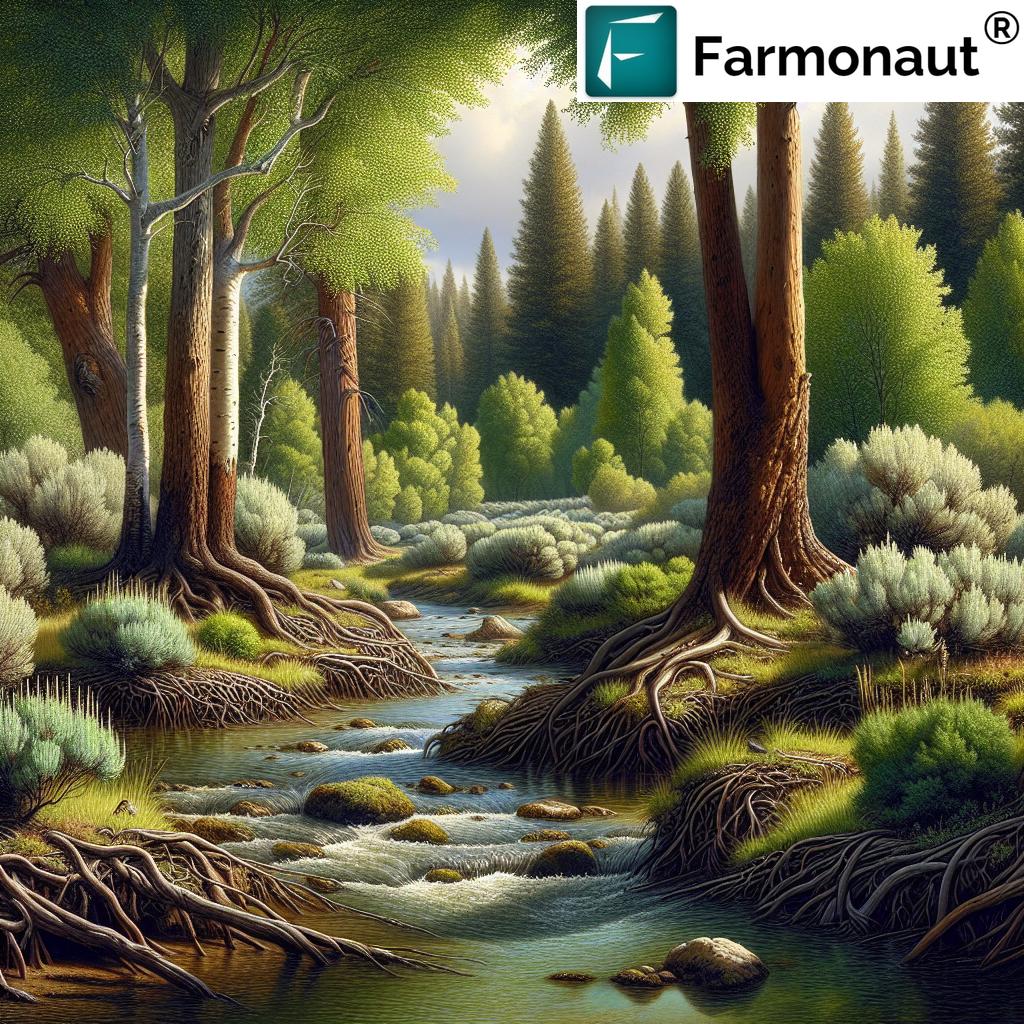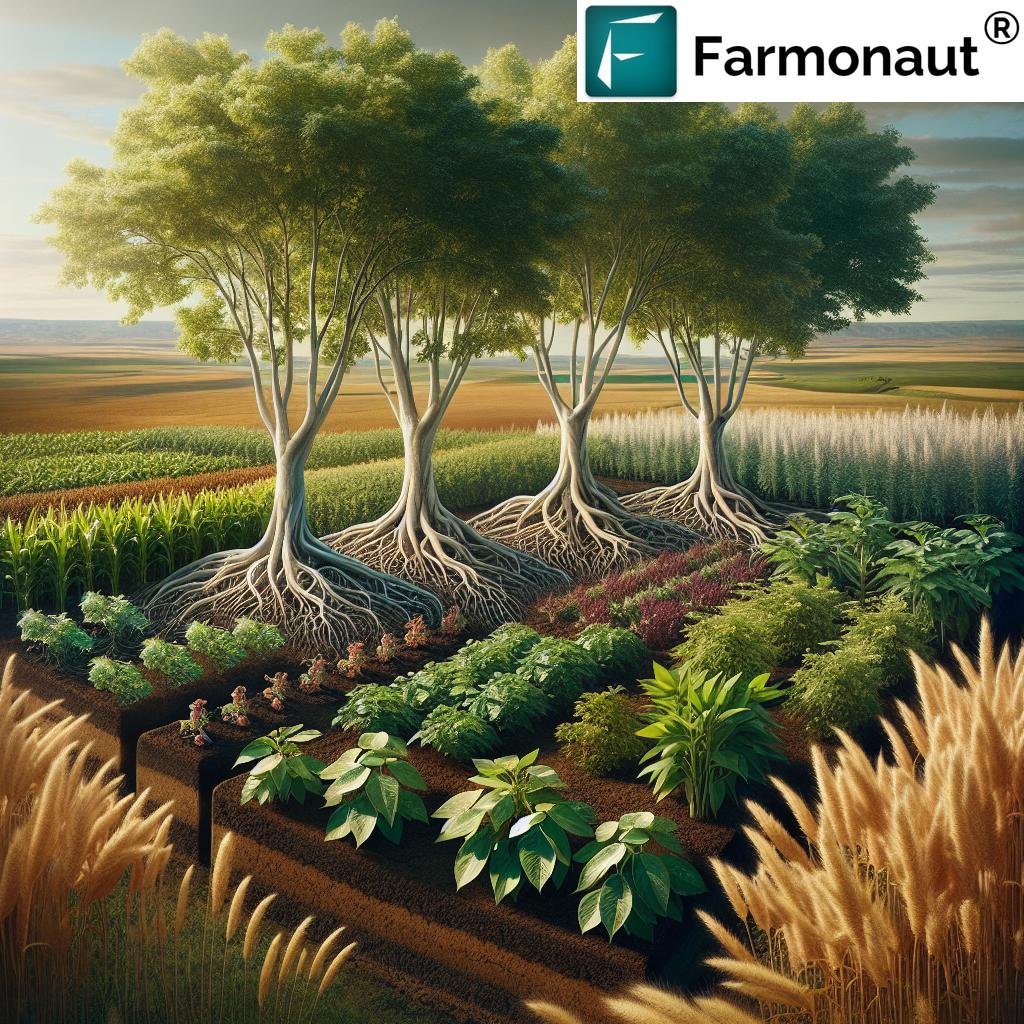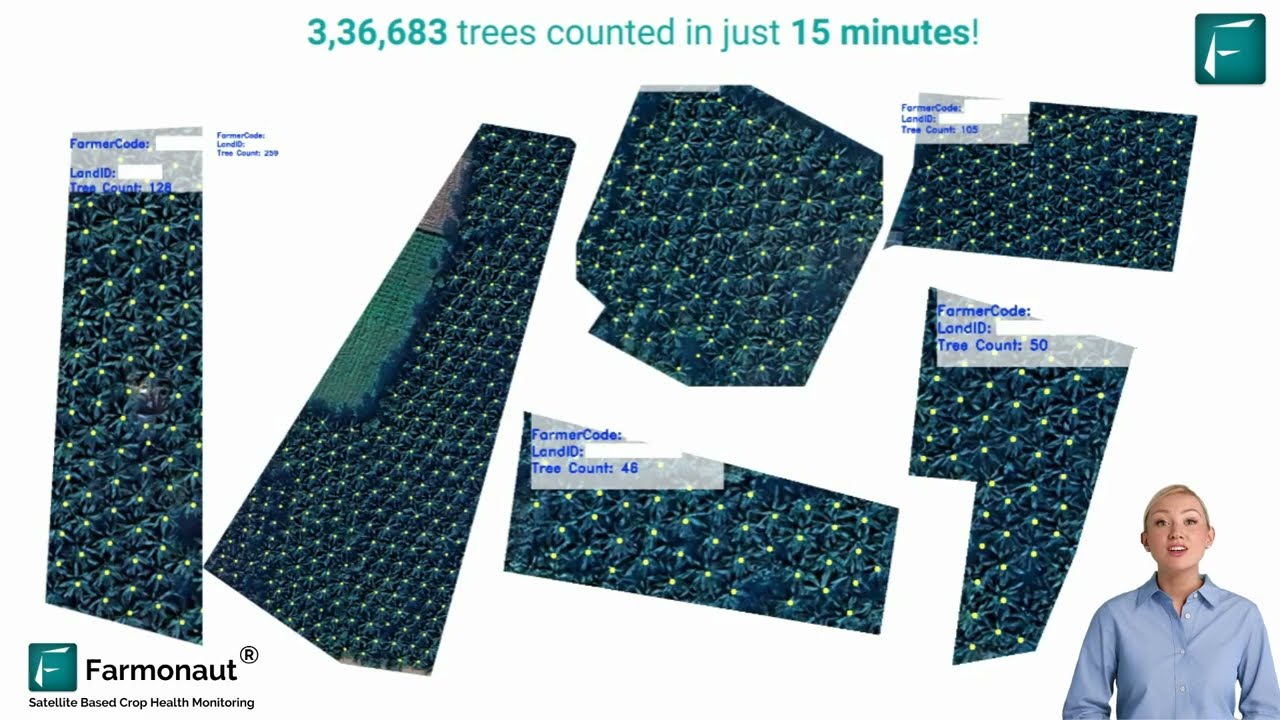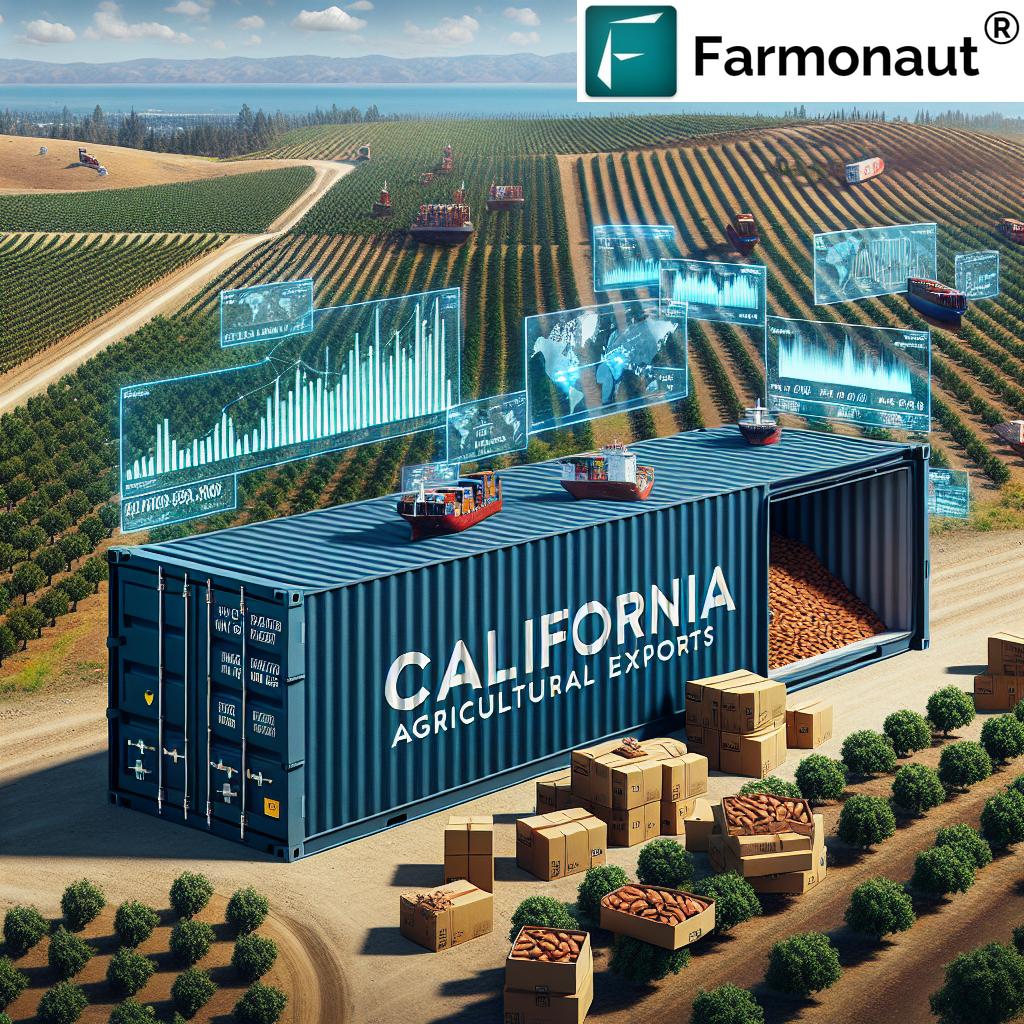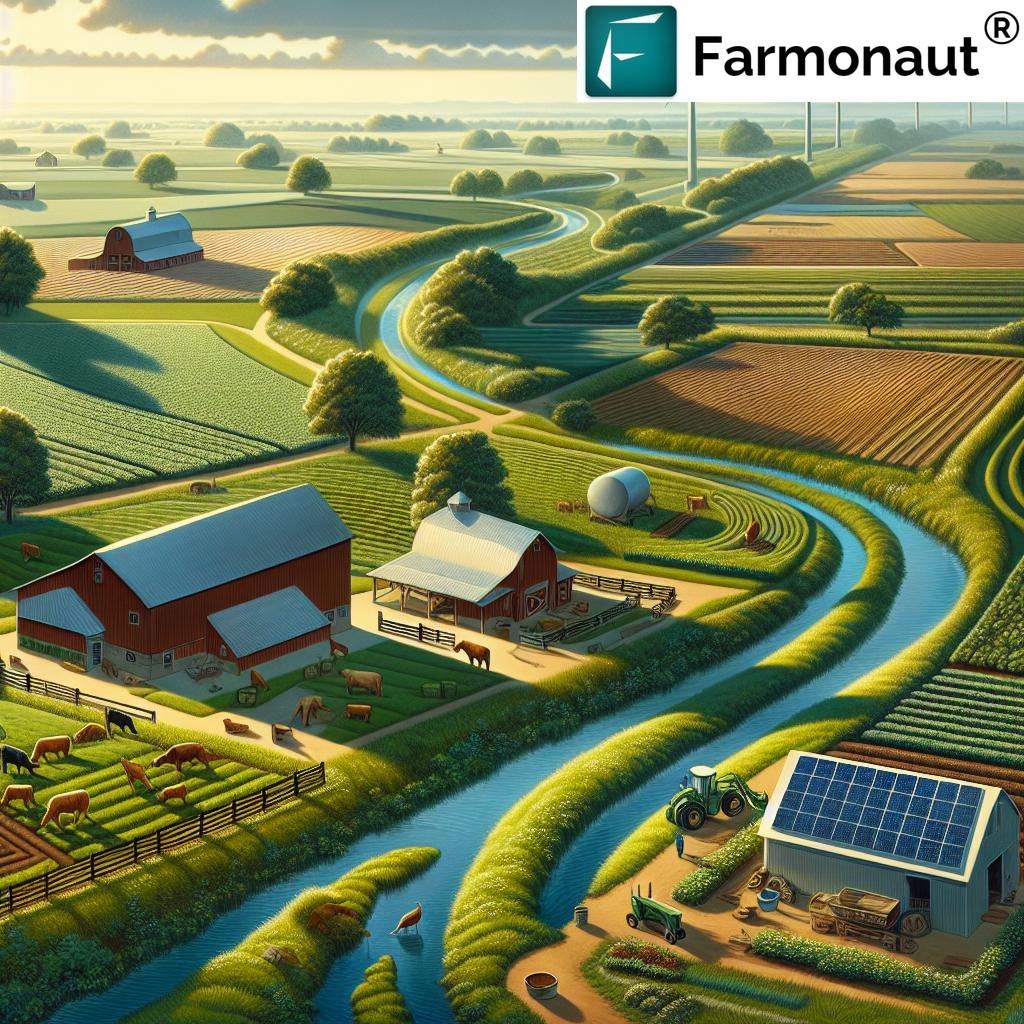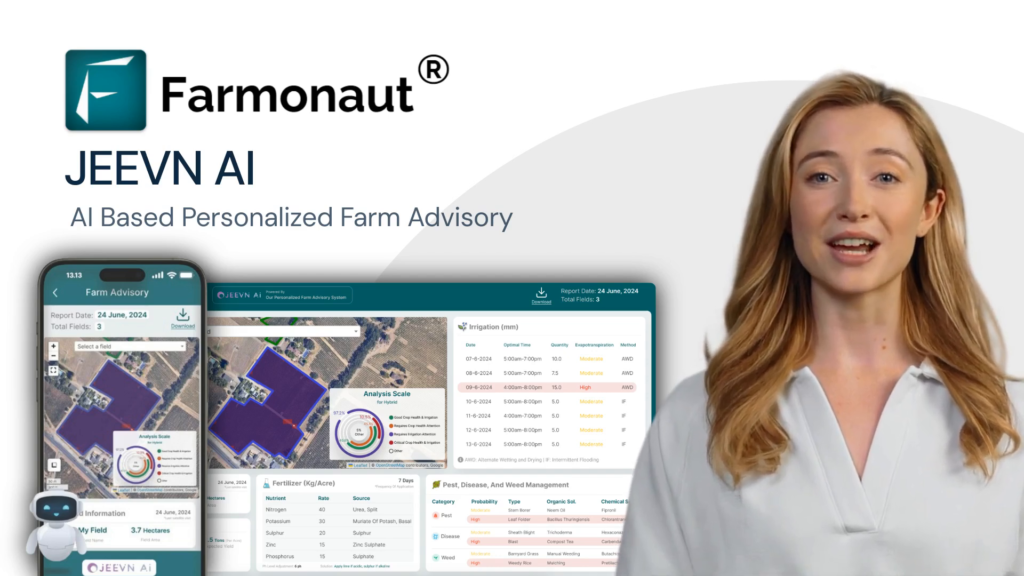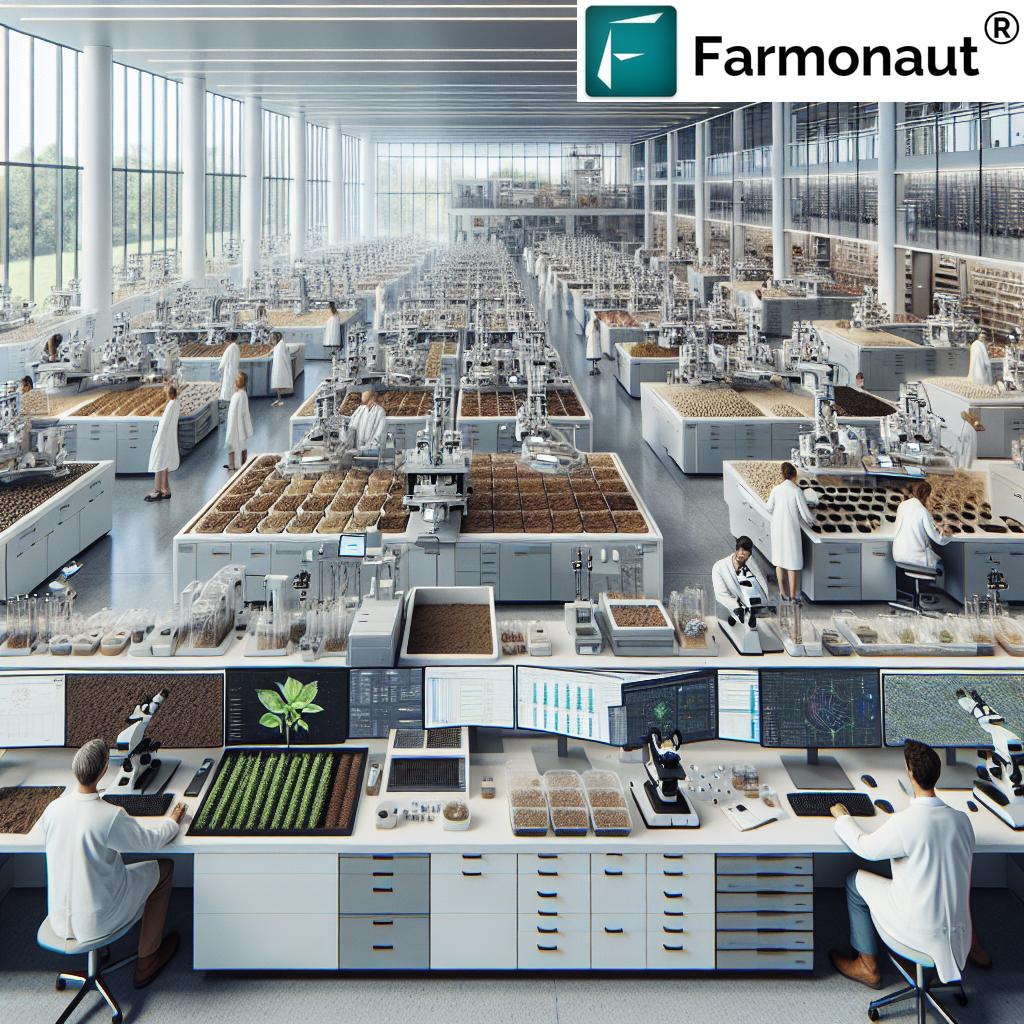Silver Dollar Plants: 7 Benefits for North America
“Silver dollar plants can increase soil organic matter by up to 15% in North American agroforestry systems.”
Introduction: Why Silver Dollar Plants Matter in North America
In the growing movement for sustainable land management and resilient agricultural systems, the integration of native plants and trees with multifaceted ecological properties is essential. One group that has gained attention is the “silver dollar plants”—a term that refers collectively to several unique species renowned for their role in agroforestry systems across North America. By understanding their characteristics, management, and integration, landowners, farmers, and environmental stewards can harness their diverse benefits for improved soil health, greater biodiversity in agriculture, and sustainable land use.
In this guide, we’ll explore the silver maple (Acer saccharinum), silver sagebrush (Artemisia cana), and the silver dollar eucalyptus (Eucalyptus pulverulenta). We highlight their ecological roles, benefits for wildlife, soil improvement, and practical applications in agroforestry and agriculture—with a focus on the North American context. Additionally, we’ll introduce innovative tools from Farmonaut that enhance agroforestry planning through satellite-based insights and data-driven management.
What Are Silver Dollar Plants?
The term “silver dollar plant” covers several species in different plant families. The most commonly referenced silver dollar plants in North American agroforestry systems are:
- Silver Maple (Acer saccharinum) – A fast-growing deciduous tree native to riverbanks and floodplains in eastern and central North America.
- Silver Sagebrush (Artemisia cana) – A perennial shrub prominent in the Great Plains and western regions of North America, with distinct silvery-gray foliage and aromatic properties.
- Silver Dollar Eucalyptus (Eucalyptus pulverulenta) – An evergreen tree originally from Australia and cultivated for its aesthetic appeal (eucalyptus for landscaping and floral uses) in North American gardens and managed landscapes.
What unites these diverse plants is their striking silver-green appearance (whether from leaves or foliage), adaptability to different soils and regions, and their substantial roles in promoting sustainable, biodiverse land use.
Silver Maple Tree: Ecological and Economic Value
Native Champion of Riverbanks, Wet Sites & Soil Stabilization
The silver maple tree is a keystone native plant in North America, particularly well-suited to managing floodplain and riverbank environments. Its popularity in agriculture and urban forestry stems from its:
- Rapid Growth: Establishes canopy cover and root mass faster than most native hardwoods.
- Adaptability to Wet Soils: Silver maples tolerate saturated and periodically flooded conditions, thriving where other species might fail (soil stabilization plants).
- Soil Erosion Control: The extensive, fibrous root system binds soil along waterways, controlling water-caused soil loss in agricultural and urban landscapes.
Site Suitability and Management in Agroforestry Systems
Found predominantly along the Mississippi, Great Lakes, and Atlantic river systems, the silver maple tree prefers deep, moist alluvial soils with periodic flooding. However, its shallow roots can cause maintenance challenges in urban settings or near infrastructure (such as drainage pipes and water lines). Thoughtful placement and management—especially in mixed hardwood stands or with understory plantings—maximizes ecological value while minimizing drawbacks.
Shade Tolerance and Plant Interactions
The silver maple is moderately shade tolerant on fertile sites, but highly intolerant in poor soils, influencing its dominant role in rich riparian forests but lesser role in uplands. Competing with other fast-growing hardwoods like cottonwood or willow, it often forms significant, mixed stands in nutrient-rich, moist regions.
Timber and Economic Value
While not as hard or dense as sugar maple, silver maple wood is valued for:
- Furniture, boxes, crates, and paneling—especially in the Midwest and Northeast where agriculture and light manufacturing intersect.
- Economic diversification: Beyond timber, silver maple’s presence increases ecosystem services, provides potential for carbon offset initiatives and supports multi-use land management in agroforestry systems.
Did you know? With its fibrous root system and rapid canopy development, the silver maple tree supports a variety of native wildlife by stabilizing banks and providing habitat structure—making it one of the most valuable wildlife habitat plants for riparian restoration.
Silver Sagebrush Benefits for Agroforestry & Biodiversity
Silver sagebrush (Artemisia cana) is a perennial shrub native to the North American West and Great Plains. Renowned for its silvery, aromatic leaves, it is essential in “biodiversity in agriculture” strategies and wildlife habitat plants efforts.
Wildlife Habitat Properties (Key Focus: Sagebrush Ecosystems)
- Forage and Cover: The dense, aromatic foliage supports diverse wildlife—from pronghorn and bighorn sheep to deer, elk, and sage-grouse—offering year-round browse and protection. In late summer, silver sagebrush is often the best available forage when upland vegetation dries, helping bridge food shortages for wildlife and livestock.
- Resilience in Harsh Sites: Thrives in dry plains and alkaline or saline soils less suitable for crops—making it a linchpin plant for soil health improvement in agroforestry.
- Soil Stabilization: Its perennial root system binds fragile prairie and range soils, reducing erosion and supporting the persistence of native forbs and grasses.
Agroforestry Systems & Management Practices
- Diversity and Ecosystem Service: Silver sagebrush is a model shrub for biodiversity restoration, supporting over 30 native pollinator species and benefiting overall ecosystem function.
- Integration of Trees in Farming: By combining sagebrush with deciduous trees and grasses in managed agroforestry systems, landowners increase resilience against drought, pests, and soil loss.
“Integrating silver maple and sagebrush boosts local biodiversity by supporting over 30 native pollinator species.”
Eucalyptus for Landscaping and Agroforestry in North America
Silver dollar eucalyptus (Eucalyptus pulverulenta)—while native to Australia—has carved out a niche in North American agriculture and landscaping due to its:
- Ornamental appeal: Its rounded, silver-blue leaves are highly sought-after in the floral industry, appreciated in fresh or dried arrangements.
- Aromatic properties: Produces essential oils with antimicrobial and pest deterrent effects.
- Drought and site adaptability: Thrives in well-drained soils; recommended for regions with warm summers and temperate winters (USDA Zones 8-10; tolerates brief spells down to 20–30°F).
- Low maintenance: Suited for small gardens, roadways, and as a specimen tree in urban, mixed, and rural landscapes.
- Erosion Control and Soil Health: Not as aggressive as some eucalyptus relatives, but provides moderate root mass and leaf litter for improving soil organic matter.
When considering eucalyptus for landscaping in North American agroforestry systems, always balance its benefits against potential invasiveness and manage cold protection in northern climates.
Want to track and reduce the carbon impact of your orchard, forestry, or eucalyptus plantation? Learn more about Farmonaut’s Carbon Footprinting tool for science-based emission insights.
Integration of Silver Dollar Plants in Agroforestry Systems
Agroforestry is the strategic integration of trees in farming landscapes to yield both economic and ecological benefits. Whether through windbreaks, riparian buffers, silvopasture, or diversified crop-tree systems, the inclusion of silver maple, sagebrush, or eucalyptus provides:
- Biodiversity in Agriculture: These species support native bee populations, birds, deer, and essential pollinators, thereby strengthening food web stability.
- Soil Health Improvement in Agroforestry: Improving soil organic matter, promoting deeper nutrient cycling, and reducing compaction or erosion on sites prone to water movement.
- Economic Diversification: Generate income through timber, forage, ornamental products, and eco-tourism opportunities—while increasing ecosystem services.
- Resilience to Climate Change: Agroforestry buffers landscapes against drought, pests, and extreme weather, securing long-term productivity.
- Sustainable Land Management: Reduces chemical inputs by naturally cycling nutrients and suppressing weeds, while enhancing landscape connectivity for wildlife.
In modern practice, advanced technologies like Farmonaut’s satellite monitoring and AI-based advisory empower landowners to maximize the benefits of these diverse plants and adapt management strategies in real time.
7 Key Benefits: Silver Dollar Plants in North America’s Agroforestry
-
Soil Stabilization & Erosion Control:
- All three species—especially silver maple—excel in riverbank and floodplain stabilization.
- Silver sagebrush binds fragile western soils, combating wind and water erosion across the plains.
- Silver dollar eucalyptus complements ornamental and slope stabilization roles in urban and rural settings.
-
Improved Soil Health & Organic Matter:
- Deep root systems and annual leaf litter inputs can increase soil organic matter by up to 15%, greatly boosting soil health improvement in agroforestry.
-
Biodiversity Enhancement & Habitat Creation:
- Silver sagebrush and silver maple together support over 30 pollinator families; all three offer habitat for native birds, mammals, and invertebrates.
- These plants are “wildlife habitat plants”—essential components of biodiversity in agriculture.
-
Economic Value and Product Diversification:
- Silver maple provides moderate-density timber for paneling, furniture, and crates.
- Silver sagebrush and eucalyptus contribute forage, aromatic products, ornamental cuttings, and more.
-
Sustainable Land & Resource Management:
- Reduce reliance on fertilizers and pesticides by leveraging natural nutrient and pest cycling services.
- Use in windbreaks, living fences, or riparian buffer zones for multi-functional land management.
-
Water Quality Protection:
- Silver dollar plants filter runoff and stabilize soils, reducing sedimentation and nutrient pollution in adjacent waterways.
- Their root systems intercept and utilize excess water, improving drainage in wet sites.
-
Resilience & Climate Adaptation Strategy:
- Drought-resilient sagebrush, flood-tolerant maple, and the moderate water-use eucalyptus together provide system stability against climate extremes in North America.
Examples of Application in North America:
- Mixed hardwood-sagebrush buffer: Combines riparian soil protection with upland prairie restoration.
- Silvopasture: Silver maple and eucalyptus offer scattered shade; sagebrush boosts winter livestock browse and native diversity.
- Native plants for erosion control and water management: Especially useful on Western, Midwestern, and Prairie sites.
Comparative Benefits Matrix: Key Silver Dollar Species in Agroforestry
| Plant Species | Primary Ecological Benefit | Estimated Increase in Soil Health (%) | Biodiversity Enhancement | Carbon Sequestration Potential (kg CO₂/ha/year) | Additional Sustainable Use |
|---|---|---|---|---|---|
| Silver Maple (Acer saccharinum) | Soil stabilization & riparian erosion control | 12–15% | High | 9,000–12,000 | Moderate-density timber, buffer strips, wildlife cover |
| Silver Sagebrush (Artemisia cana) | Wildlife habitat & soil resilience on plains | 10–12% | High | 2,000–3,000 | Forage, aromatics, pollinator support |
| Silver Dollar Eucalyptus (Eucalyptus pulverulenta) | Moderate soil improvement & ornamental use | 8–11% | Medium | 7,000–10,000 | Cut foliage, essential oils, decorative screens |
| Mixed Systems (e.g., Maple + Sagebrush) | Layered benefits: soil health, water quality, and biodiversity | 15%+ | Very High | 10,000–14,000 | Multi-strata shelterbelts, enhanced ecosystem services |
*All figures are estimates for representative, well-managed North American agroforestry systems and will vary by site-specific factors.
Farmonaut Solutions for Advanced Agroforestry Management
At Farmonaut, we empower landowners and agribusinesses in North America and globally to manage agroforestry systems, farming, and forestry with the latest in precision technology:
- Satellite-Based Crop and Vegetation Monitoring: Track crop health, soil moisture, and vegetation status with high-resolution imagery—essential for sustainable management of agriculture and mixed-use landscapes.
- AI-Powered Advisory: Utilize real-time weather forecasts and customized strategies for soil health improvement in agroforestry and risk management.
- Blockchain-Based Traceability: Ensure supply chain integrity for forestry, floral, and agricultural products. Know the origin and stewardship of every product—key for eco-labels and transparent marketing.
- Resource & Fleet Management: Optimize the movement and maintenance of your agricultural machinery, especially for large-scale forestry and multi-crop systems. Learn more about Fleet Management.
- Carbon Footprinting: Calculate greenhouse gas emissions from land use or plantation projects. Our dedicated carbon accounting platform simplifies reporting and sustainable goal tracking.
- API Access: Integrate weather and satellite data into your operations via the Farmonaut API and check detailed developer docs here.
Our mission is clear: to make advanced, affordable precision agriculture and agroforestry accessible to every grower, from family farms to large estates, across North America.
FAQ: Silver Dollar Plants & Agroforestry in North America
Their deep, fibrous root systems and adaptability to diverse soils (from wet riverbanks to arid plains) make them unmatched soil stabilization plants. They bind soil, reduce erosion, and, when strategically managed, improve soil organic matter and structure.
Q: Can silver dollar eucalyptus survive North American winters?
Eucalyptus pulverulenta thrives in USDA Zones 8–10 and may survive brief dips to 20–30°F. In colder regions, provide windbreaks or grow in containers for seasonal protection.
Q: Do these species pose any risks in mixed-use landscapes or urban agriculture?
Yes. Silver maple roots can invade drainage pipes in dense urban settings; eucalyptus may become invasive or outcompete natives if unmanaged. Proper placement and species management are essential for effective, sustainable integration.
Q: Are there financial incentives for integrating these plants into agroforestry?
Yes. Many programs offer credits for carbon sequestration, soil protection, and wildlife habitat enhancement. With Farmonaut’s crop, plantation, and forest advisory services, landowners can monitor and document ecosystem services for incentive qualification.
Q: How do these plants improve water quality in agricultural landscapes?
As native plants for erosion control, their root systems and foliage filter runoff, reduce sediment entry to waterways, and intercept excess nutrients, helping maintain clean water in both rural and peri-urban contexts.
Q: What tools can help manage mixed-use agroforestry systems efficiently?
Satellite monitoring, AI-based crop advisory, blockchain-based traceability, carbon footprinting, and fleet/resource management tools from Farmonaut offer comprehensive solutions for data-driven, sustainable agroforestry management.
Conclusion
The “silver dollar plants” of North America—silver maple, silver sagebrush, and silver dollar eucalyptus—offer powerful, multi-dimensional benefits in agroforestry systems. Their unique roles, from soil stabilization and erosion control to biodiversity enhancement and economic diversification, are essential for building resilient, sustainable land-use systems facing environmental change.
Understanding their ecological characteristics, management needs, and integration strategies is vital for landowners, farmers, and environmental stewards in North America. With the aid of advanced, affordable technology and data-driven insights from Farmonaut, anyone can optimize the productivity and sustainability of their landscape—protecting both economic value and the natural environment for generations to come.
Ready to take your agroforestry or sustainable land project to the next level? Discover how our satellite-based solutions can unlock the full benefits of silver dollar plants in your North American landscape.
For advanced advisory, field monitoring, and sustainable farm management, visit Farmonaut’s Crop, Plantation & Forest Advisory Page.


